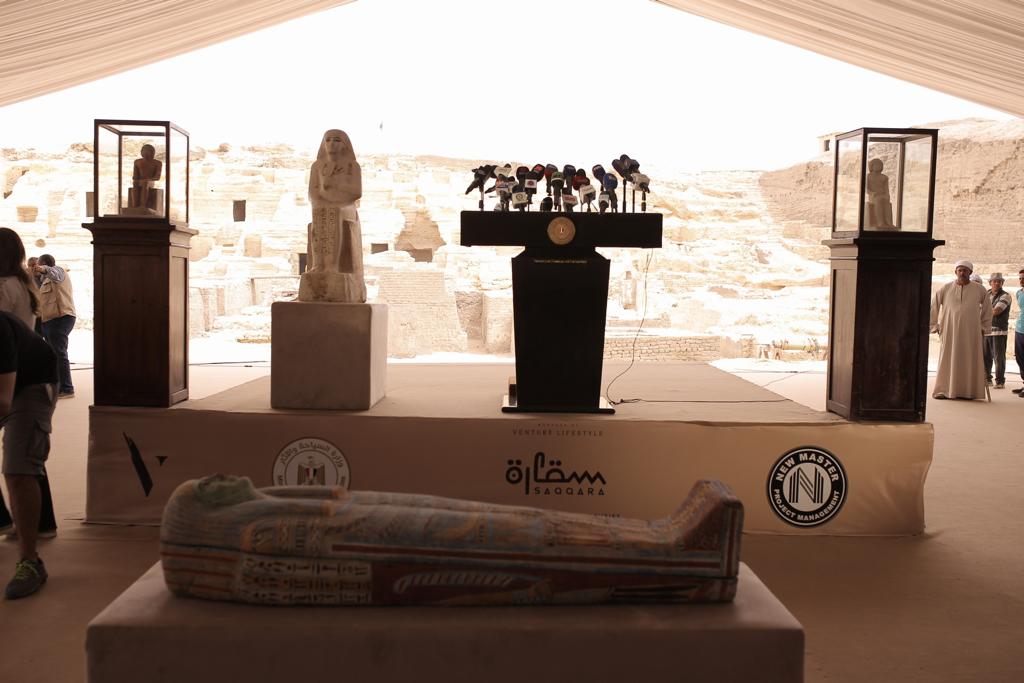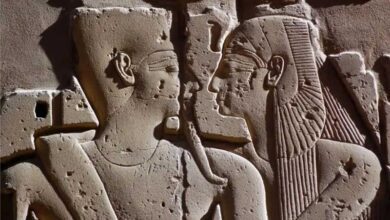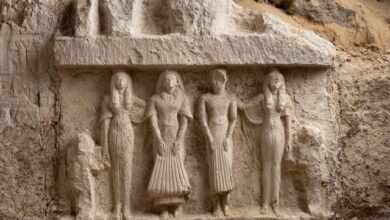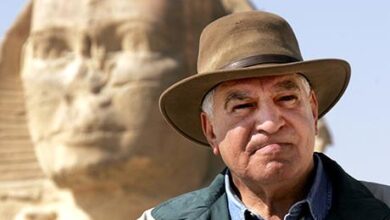New Discovery in Saqqara : Sixth consecutive year

For the sixth consecutive year, the Egyptian archaeological mission led by Dr. Mostafa Waziry, Secretary General of the Supreme Council of Antiquities succeeded to uncover:The biggest and most complete two embalming workshops for humans and animals along with two tombs and a collection of artifacts.
During the conference, H.E. Minister of Tourism and AntiquitiesAhmed Issa, said in his speech that he is glade to be in Saqqara one of the largest royal necropolises in Egypt that houses the oldest stone building in history, the Step Pyramid of Djoser, as well as many other pyramids of kings and queens as part of Memphis necropolis on the UNESCO World Heritage List.
It is also a unique tourist destination that offers its visitors an incredible experience of discovering its rich ancient Egyptian treasures, but also through the development work carried out by the Supreme Council of Antiquities to improve the services provided to visitors in partnership with the private sector.
This came within the framework of Egypt’s National Tourism Strategy aiming at a rapid increase in the number of inbound tourism between 25% to 30% per anum to achieve a threefold increase in seats capacity on flights, which will then increase the number of international tourist arrivals.
It also aims at encouraging and enhancing the investment environment by designing master plans for destinations and launching new investment opportunities and enhancing the tourist experience.
Saqqara is the land of secrets and great discoveries that have always attracted the whole world, to Egypt and its unique heritage. Today we will unveil one of those secrets and announce the discovery of two large embalming workshops for humans and animals as well as two ancient Egyptian tombs and other artefacts exhibited here on site. The excavation was carried out by an Egyptian mission led by Dr. Mostafa Waziy.
He expresses his appreciation to the members of the excavation mission and Dr. Mostafa Waziry, as well as all the employees of the Supreme Council of Antiquities for the efforts they always exert to make important discoveries and to preserve Egypt’s heritage.
“I witnessed their hard work during my visit last month to the necropolis of the sacred animals (Bubastian) to check upon the work being achieved and met the working members of the mission who revealed this new discovery.” They are also responsible of discovering so much more, continuing to inhibit the world and make the headlines of local and international news during the past years. This has helped promoting Egypt and one of its incredible tourist destinations.
“I assure you that Egypt, especially the archaeological site of Saqqara did not yet reveal its secrets and there are many more to come,” Issa asserted.
Dr. Mostafa Waziry, Secretary General of the Supreme Council of Antiquities explains that the two embalming workshops date back to the 30th Dynasty and the Ptolemaic periods while the two tombs are from the Old and New Kingdoms.
The workshop for humans has a rectangular shape and designed to be divided into several rooms equipped with stony beds where the deceased lay down for mummification. Each bed is two meters long and 50 cm wide. They are covered with plaster and end with gutters.
Inside each room, the mission unearthed a collection of clay pots among which those used in mummification as well as a collection of mummification instruments and ritual vessels.
The animals embalming workshop is a rectangular shape too, made of mud with stony floors. It consists of a group of rooms inside which found a collection of clay pots and burials for animals along with bronze tools used in the mummification process.
The workshop has five beds made of stone different than those found inside the human embalming workshop. Early studies reveal that this workshop was used in the mummification of the sacred animals.
Sabri Farag, general director of Saqqara archaeological site said that the first uncovered tomb belongs to a top official of the fifth Dynasty named “Ne Hesut Ba” (2400 BC) who was the head of scribes and the priest of Horus and Maat.
The second tomb belong to Qadish Priest named “Men Kheber” from the 18th Dynasty (1400 BC).
Mohamed Youssef, director of the Saqqara site pointed out that the Old Kingdom tomb consists of a mastaba with a stone painted façade with the names of the deceased and his wife. Above it a lintel bearing hieroglyphic text showing the different titles of the deceased and his wife as well as painting for the offering holders. Daily life, cultivating and hunting scenes are also shown inside the tomb. The New Kingdom tomb is carved in rock with a door and lintel decorated with the names of the deceased and his wife. The tomb is decorated with scenes showing the deceased in different position before offering tables. Inside it a niche was found with a one-meter-long alabaster statue of the tomb’s owner. He is shown wearing a long dress, a wig and holding the lotus flower in one hand. The statue is decorated with hieroglyphic text written in blue.
Other statues were found among them a collection of wooden statue for a man named Nesu Henu and his wife from the fifth Dynasty and an anthropoid painted coffin from the third intermediate period. A collection of ushabti figurines was also unearthed.






